
The purpose of Lean Six Sigma is to identify opportunities for improving organizational processes. One of the challenges is the selection of projects for improvement teams to work on. Let’s learn more about how to select impactful projects.
Both Lean and Six Sigma projects are used to improve organizational processes. Improvement teams are formed. DMAIC is the primary improvement methodology that is used. While there are challenges in selecting team members and executing the DMAIC phases, one of the biggest challenges is the selection of projects which will have an impact on the organization.
Overview: How to select projects?
The selection of improvement projects should be a structured and purposeful activity rather than a random selection or a knee jerk reaction to a current situation. Rather than rely on an individual’s favorites, or intuition, projects should be selected based on a set of important criteria.
While there is a long list of potential selection criteria, here are a few of the most common:
- There is not a known solution to the problem or issue.
- There should be an existing and somewhat repetitive process.
- The project can be closed in a relatively short period of time, say, 4-6 months.
- Data is available or easy to collect.
- There should be a linkage to a strategic imperative and a sense of urgency.
- Hard savings, while not always possible, should be a primary determinant for the project being selected.
The first step in project selection should be the identification of the key value levers in the organization. These would include the strategic, financial, customer, and operational or process value levers. Next, you should prioritize the value levers. The graphic below shows the value drivers.
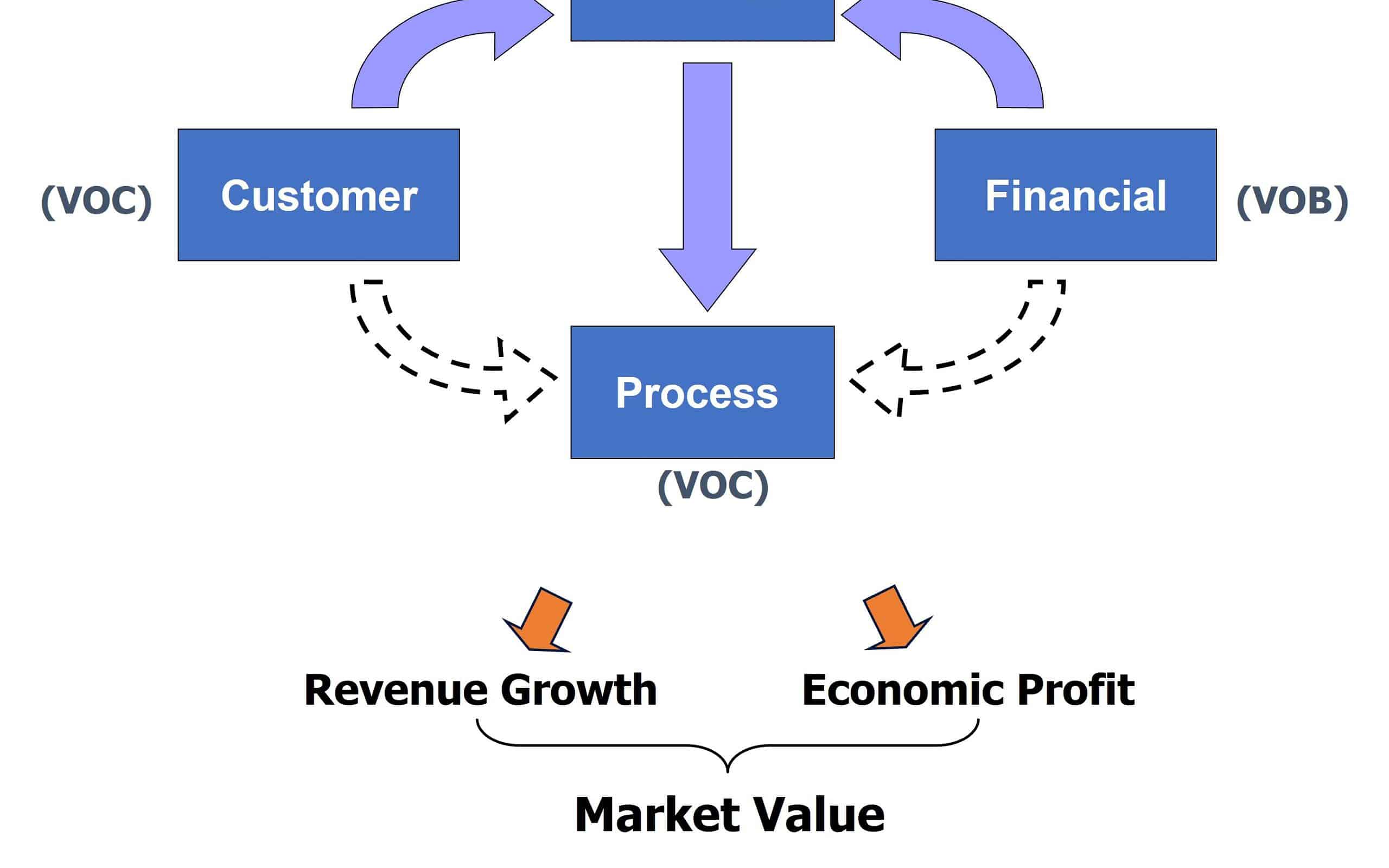
The Voice of the Customer (VOC) provides focus on critical customer requirements and drives process performance. The Voice of the Business (VOB) uses financial analysis to drive tactical business process decisions. The Voice of the Process (VOP) and process performance links to strategy, customer, and financial levers.
The second step is to translate value levers into opportunity areas and translate opportunity areas into project ideas. Below is an example of how this might be done:
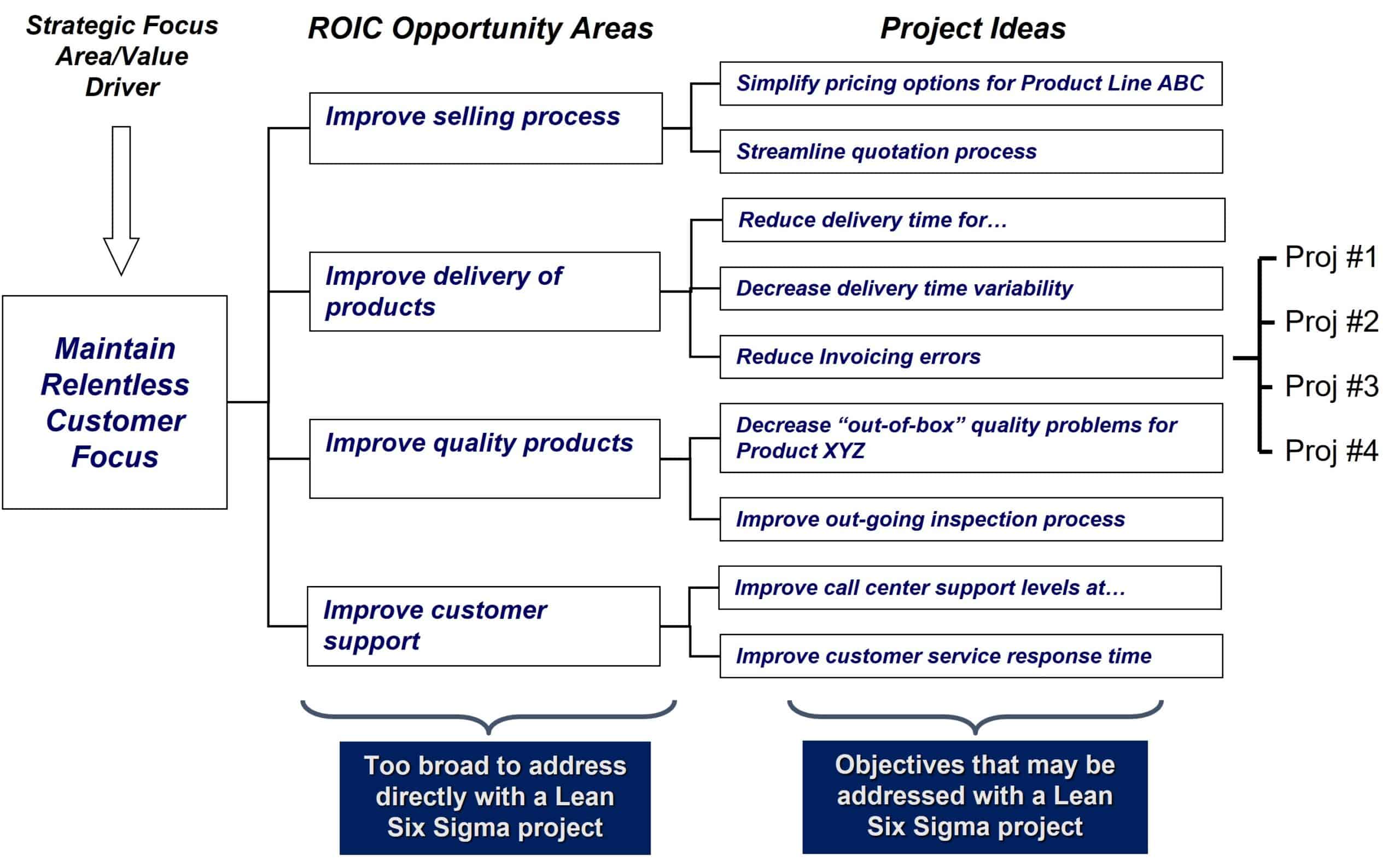
For the third step, you will need to screen the initial list of projects. For this, you can use a simple Benefit Effort Matrix. Benefits would include such things as strategic fit, revenue growth, cost reduction, and working capital reduction. Effort would include such things as resources required, project duration, capital investment, and project risk.
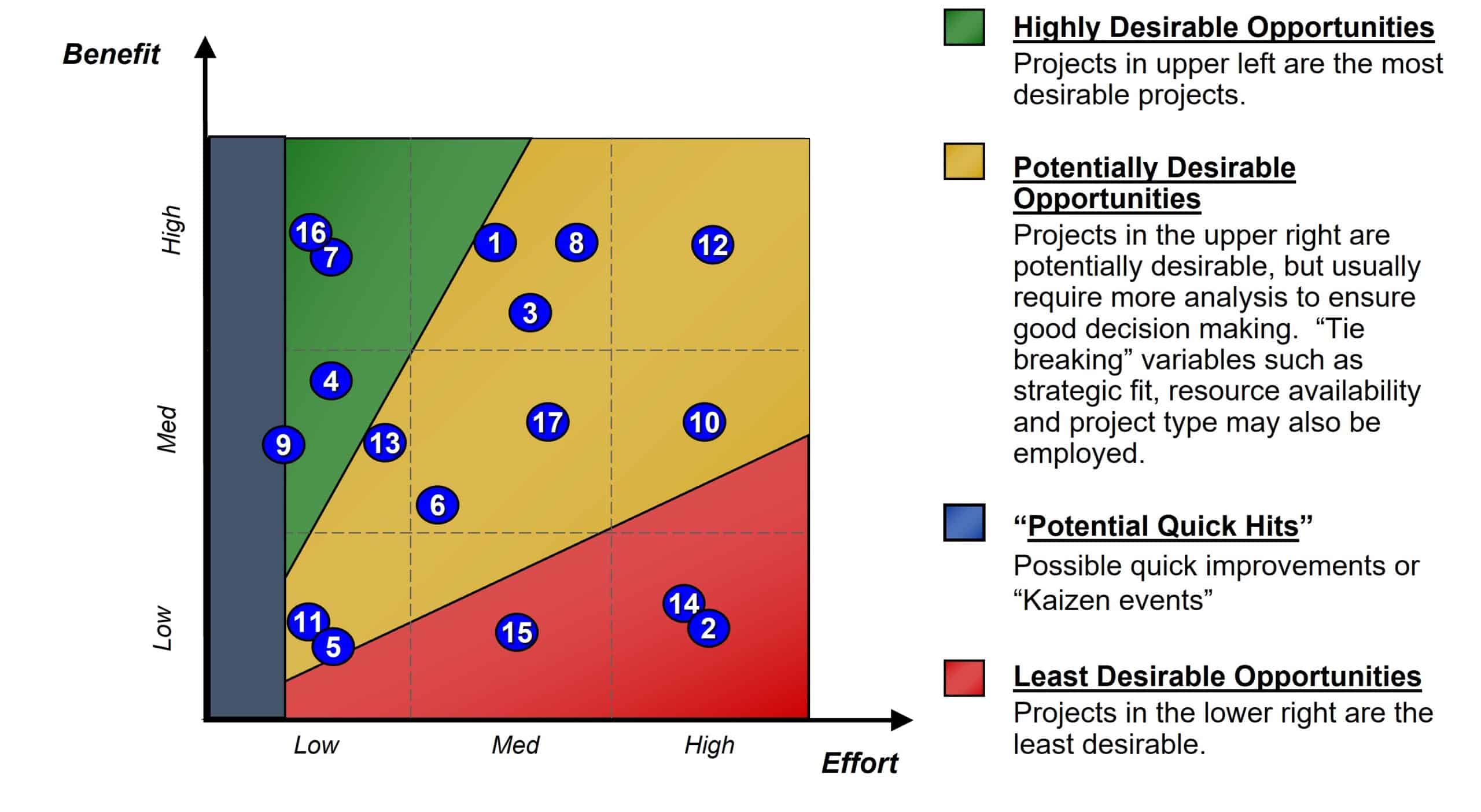
In Step 4, high priority project ideas are assigned to Project Sponsors for project definition. Project Sponsors complete draft project charters in enough detail to enable final prioritization. Finally, in Step 5, the following will occur to prioritize and select the final projects:
- Evaluate projects using Evaluation Criteria
- Update Benefit / Effort Matrix
- Review plotted results
- Prioritize projects
- Schedule project launches based on resource availability
An industry example of project selection
The company decided to use a simple Excel format for selecting their Six Sigma projects. Each project was given a rating of 1, 3 or 9 for 6 selection criteria. The values for each criterion were multiplied and the final value was the score for that project. For ease of visualization, the cells for the final score were color coded green, yellow or red. The projects were then further evaluated for final prioritization. The screenshot below shows the Excel format and scores:
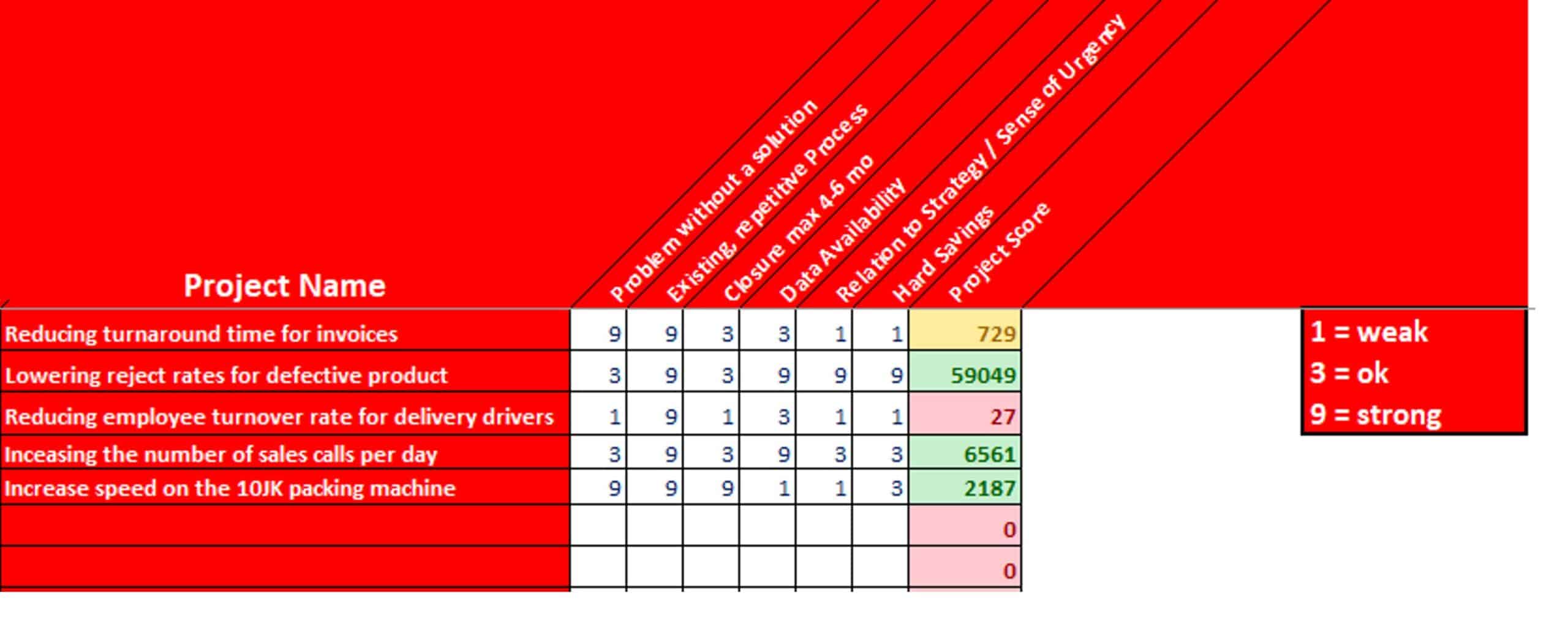
Frequently Asked Questions (FAQ) about project selection
Is there a simple graphical tool that I can use to prioritize my projects?
Yes, the Benefit/Effort Matrix is a simple way to visualize the balance between the benefits of your projects and the efforts you will need to execute them. The projects in the blue and green areas are the best ones from a balance of benefit and effort.
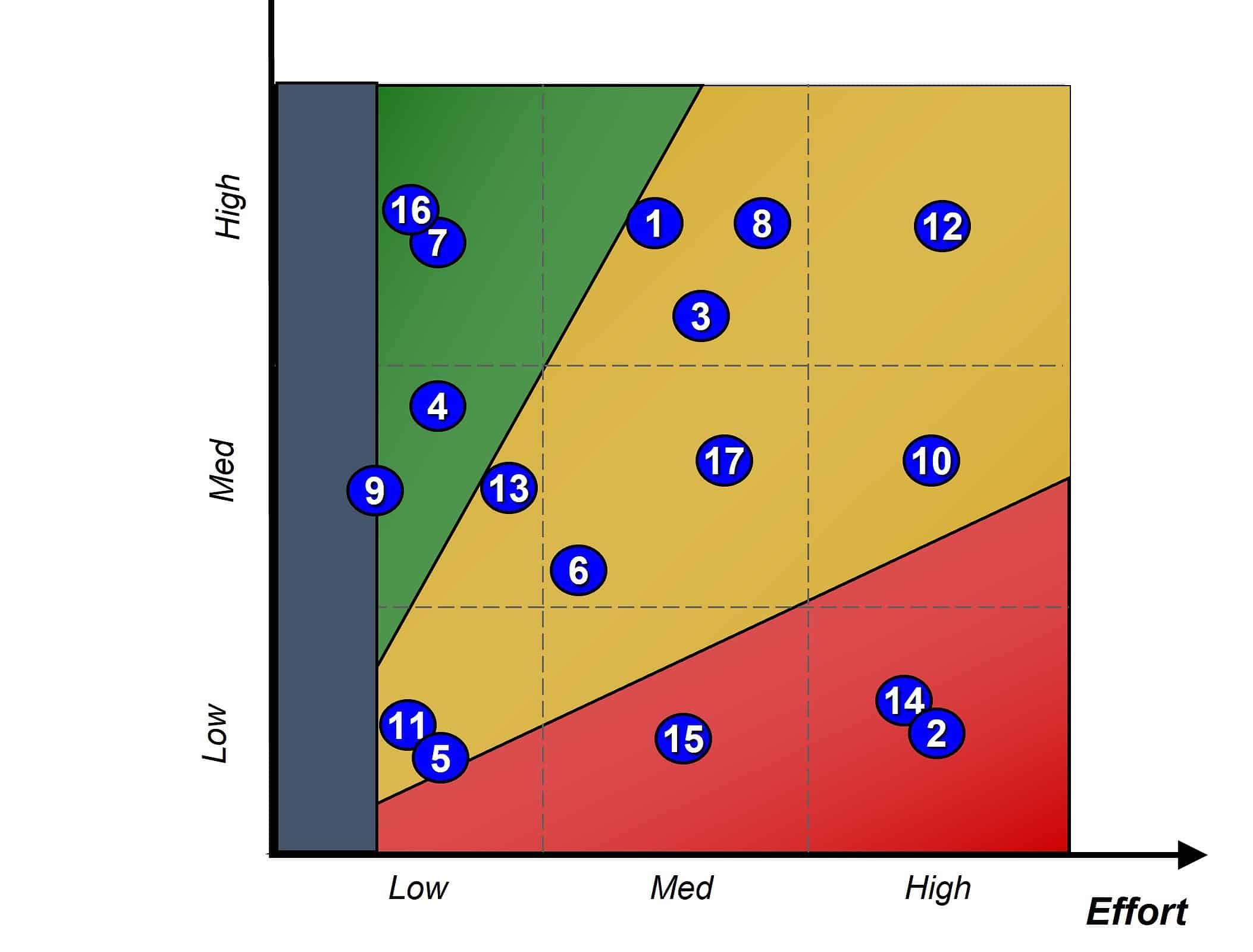
What are the primary levers I should use for selecting projects?
The common levers are strategy, financial, customer and process criteria.
Should hard dollar benefits always determine which projects to select?
Not always. Sometimes very important projects don’t have a direct hard dollar value. There are projects which you will select that are required by law, ethics or just the right thing to do. These may not have direct monetary benefits.